Ibn Tulun Mosque is a rare example, where Europeans openly admitted its influence on the development of many features of their architecture, Elements such as the pointed arch, the pier, and wall battlements formed the essential ingredients of the birth of Gothic architecture, which led Europe to the Renaissance.
The city’s oldest intact, functioning Islamic monument is easily identified by its high walls topped with neat "crenulations" that, It was built between AD 876 and 879 by Ahmad Ibn Tulun, The Mosque was completed in 879 AD on Mount Yashkur in a settlement named al-Qata'i by the founder of Egypt's Tulunid Dynasty (868-905 AD), Al-Qata'i was about two kilometers from the old community of Fustat.
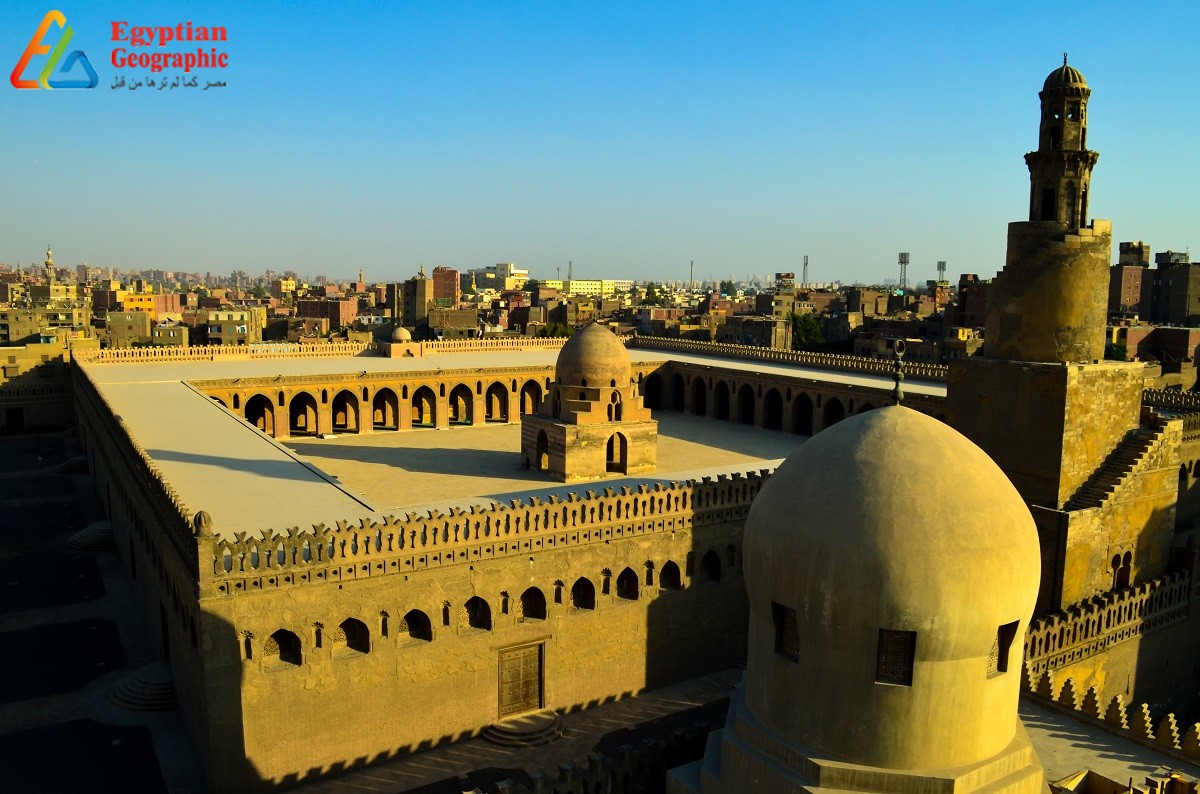
Ahmad Ibn Tulun (263-265 A.H.) was born around 835 A.D. He was one of the Turkish commanders in Samarra, located in Iraq. He received his military and theological training in Samarra and Tarsus, His intelligence and courage attracted the attention of the Khalif, and in 868 A.D, the Khalif supported his step-father Bakabak's governorship of Egypt.
The mosque that he had built over a period of three years of mudbrick became the focal point of the Tulunid capital that lasted only 26 years, It is the oldest mosque in Egypt that has survived in a fairly original form, It was the third congregational mosque to be built in what is greater Cairo, is the third largest mosque in the world, at approximately 26,318 square meters in size, large enough for the whole community of Al Fustat to assemble for Friday prayers, An outer moatlike courtyard, originally created to keep the secular city at a distance, was at one time filled with shops and stalls, Ibn Tulun drew inspiration from his homeland, particularly the ancient Mosque of Samarra in Iraq, This can be seen in the numerous common features of the two mosques, The first of these is the use of piers constructed of brick, instead of columns, to carry the arcades and the roof.
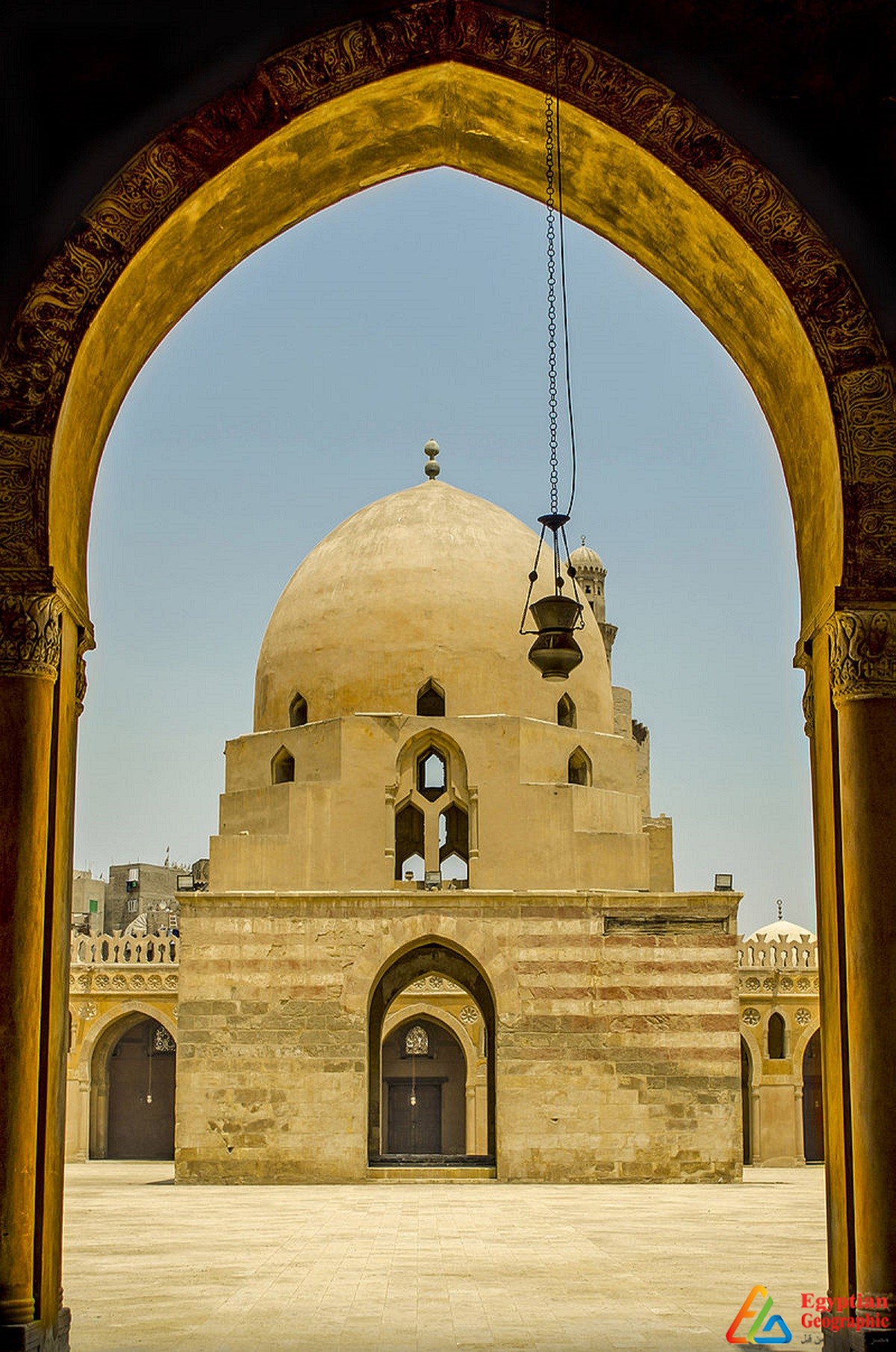
The mosque has a square shape 162 meters long, making it one of the largest mosques of Cairo, It consists of three main sections, The prayer hall is a rectangle of six aisles running parallel to the Qibla wall, These aisles are divided by five arcades of pointed arches, each one is carried on 16 piers of brick and covered with plaster, On the centre of the Qibla wall, there is the main Mihrab which is a niche of pointed arch flanked on both sides by two attached columns, Four other smaller Mihrabs which were added later appear on the sides of the main mihrab, two on each side, The minaret in its famous spiral shape, in the form of Al-Malwiya of Samarra, was built outside the enclosure wall opposite the Qibla.
The mosque is accessed through a total number of 42 doors, half of which belong to the original mosque, and The courtyard “Sahn” is a square extending south of the prayer hall, It is surrounded by covered porticoes, each consisting of two aisles of pointed arcades raised on strong piers and overlooking its open centre where a fountain and an ablution basin stand, and The third section consists of the extensions, of 11 meters each, along the northern, eastern and western sides of the mosque. These open extensions which ring the mosque on three sides work as buffers between the bustle of the streets and the religious space inside.
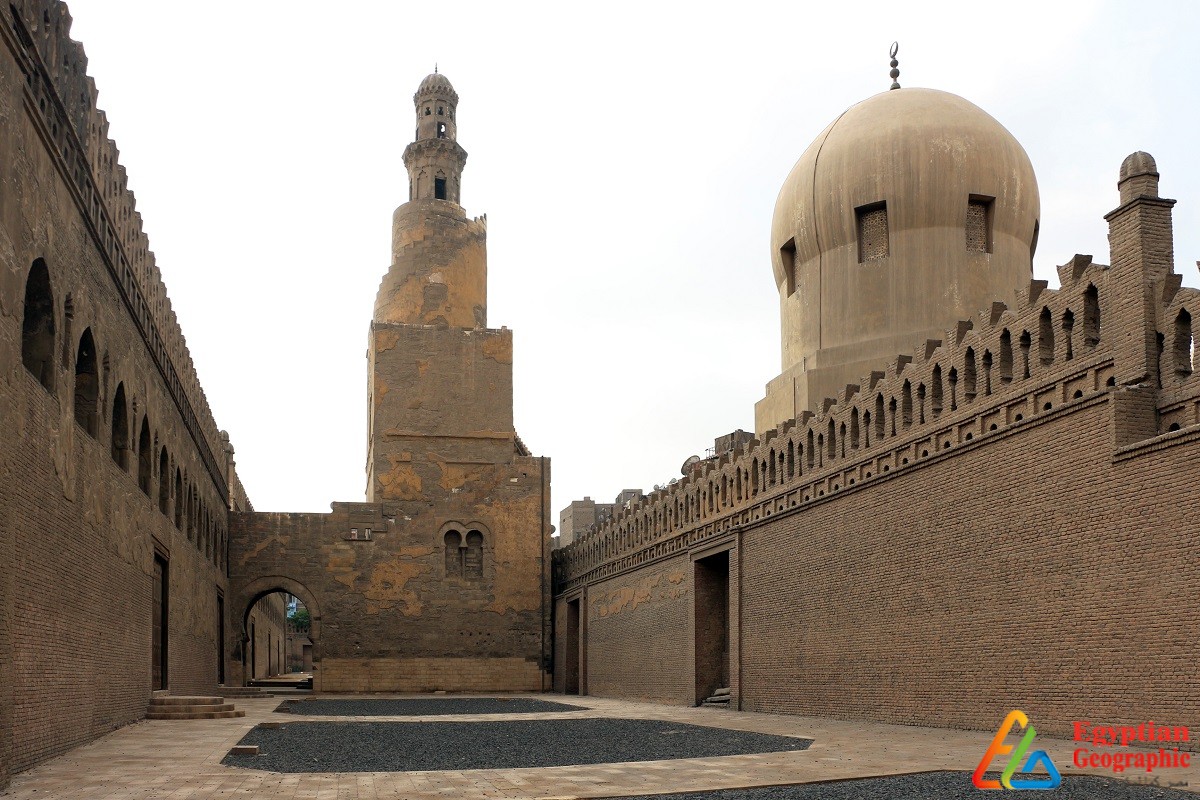
The ceiling of the Ahmed Ibn Tulun mosque is composed of palm logs constructed in wooden panels, Below the ceiling, there is a long band with a beautiful inscription, carved on sycamore wood, which runs around the whole mosque, and contains verses from the Koran, This frieze is 2 kilometers in length and it features one-fifteenth of the entireNoble Qur'an, Legend tells us that the boards used for this inscription are taken from Noah's Ark.
Byzantine style marble columns amaze the eye, adorned with their basket work capitols, Its stucco molding and the 2 stucco bosses on each side of the arch are original, The interior is decorated in Mameluk style, introduced by the sultan Lajin, featuring beautifully painted wood, as well as strips of polychrome marble. Above you can see a band of Naskhi inscription in black mosaic atop a gold background that contains the shahada. The Dikka of the Mouballegh "the bench of the Mouballegh" is situated in Riwaq Al Quibla, near the courtyard, It is a wide bench of marble columns used for communicating the words of the Imam during the prayer.
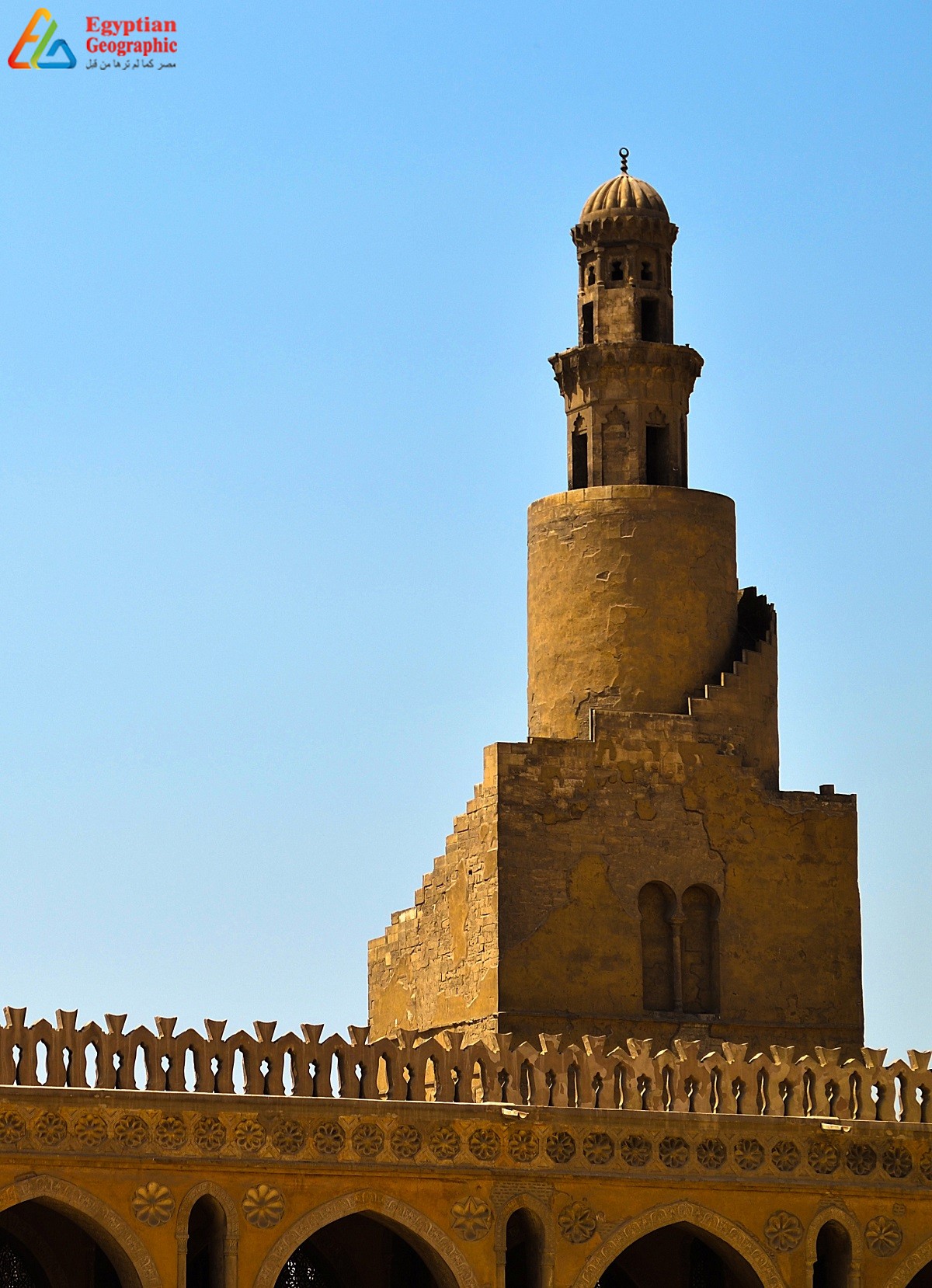
There are 128 windows, arranged independent of the arches, so that not every arch has a centered window, these arched windows were created to provide light and reduce the weight carried by the arches.
Ibn Tulun mosque is considered as one of the leading buildings to have a significant impact on the development of architecture beyond the Muslim boundaries, its architectural richness exceeded the expectations of medieval architects, especially Europeans, henceforth becoming a show case for them to imitate and admire.

It was the first recorded instance of the systematic adoption of piers to carry the arcades and the roof as an alternative to columns. This was the first use of piers outside Samarra. The mosque employed some 160 piers of rectangular shape of about 2.5 meters height and about 1.25 meters width. They reach the same height of 5 meters all around the mosque, Such a feature could not have been achieved by the use of columns, which varied greatly in height and size and would have created problems in raising the arches to the same crown level, Ibn Tulun Mosque was also the means through which the pier was transmitted to Europe.
The other feature was the systematic use of pointed arches which is regarded as the first recorded example although the pointed arch appeared earlier in Abbassid architecture in Ukhaidir Palace in Iraq 778, the Alqsa Mosque, Ramlah Cistern, as well as Jussaq Al-Khaqani Palace in Samarra 836, However, the mosque of Ibn Tulun remains the first building where the pointed arch was used constructively and systematically, This was at least two and a half centuries before it was introduced to Europe.




























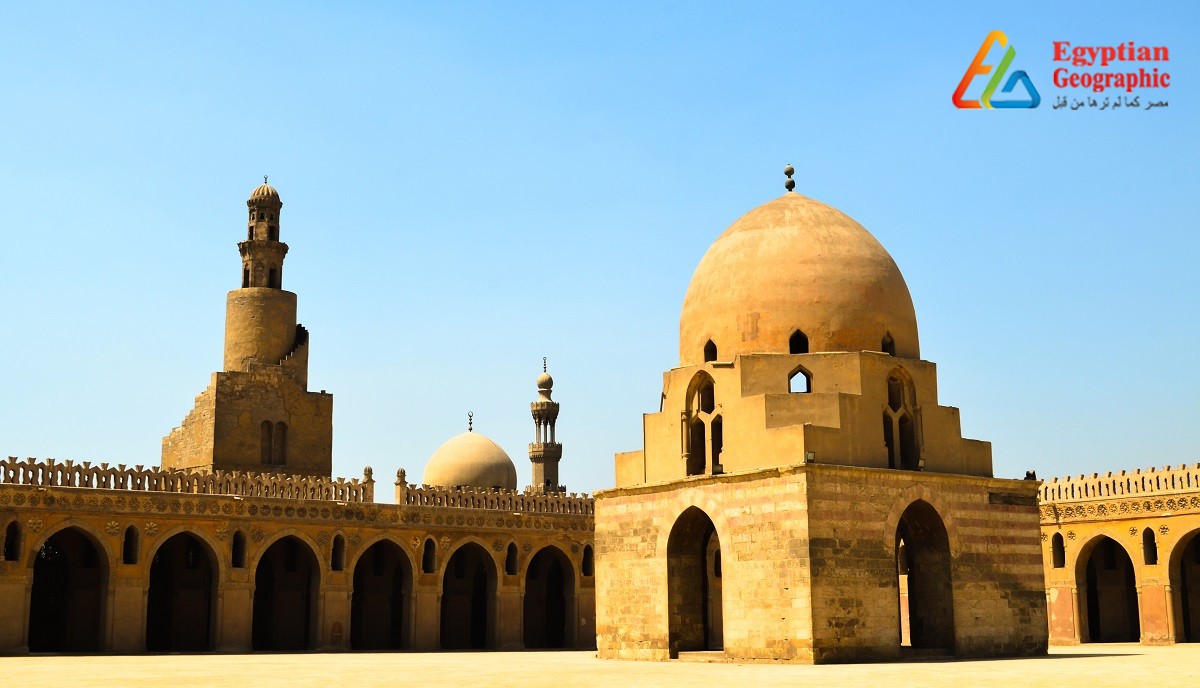




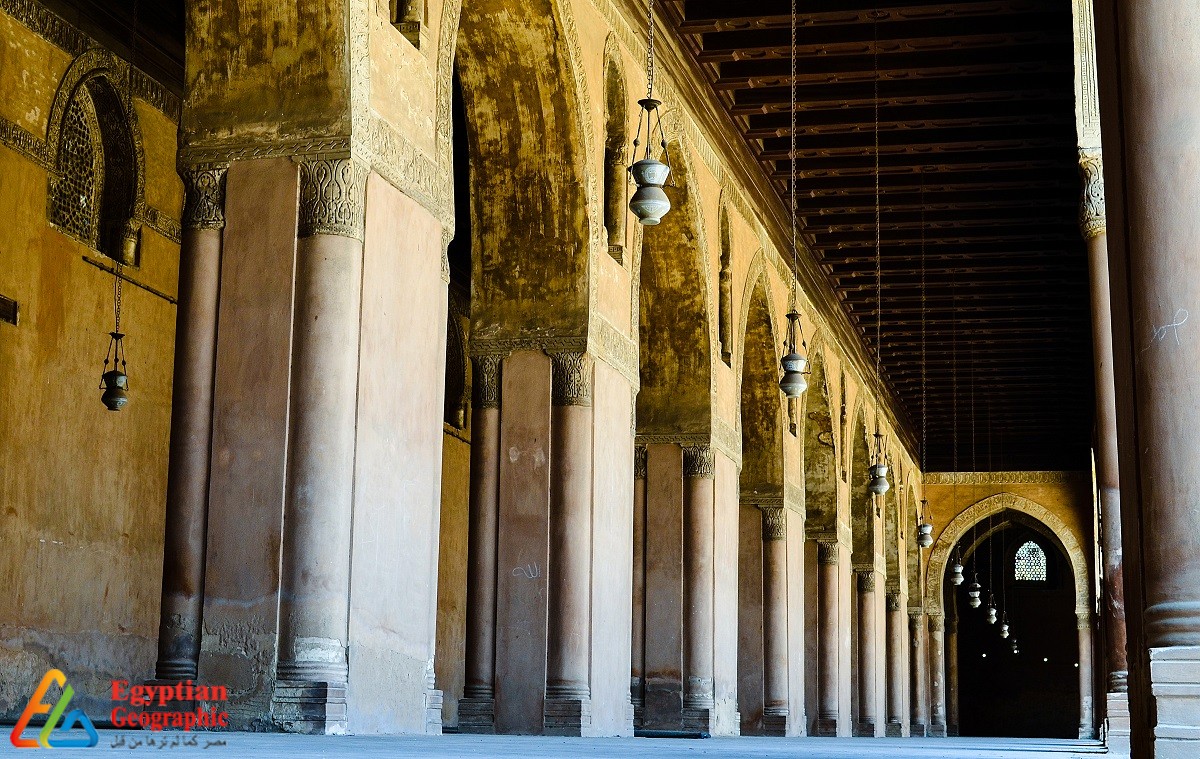
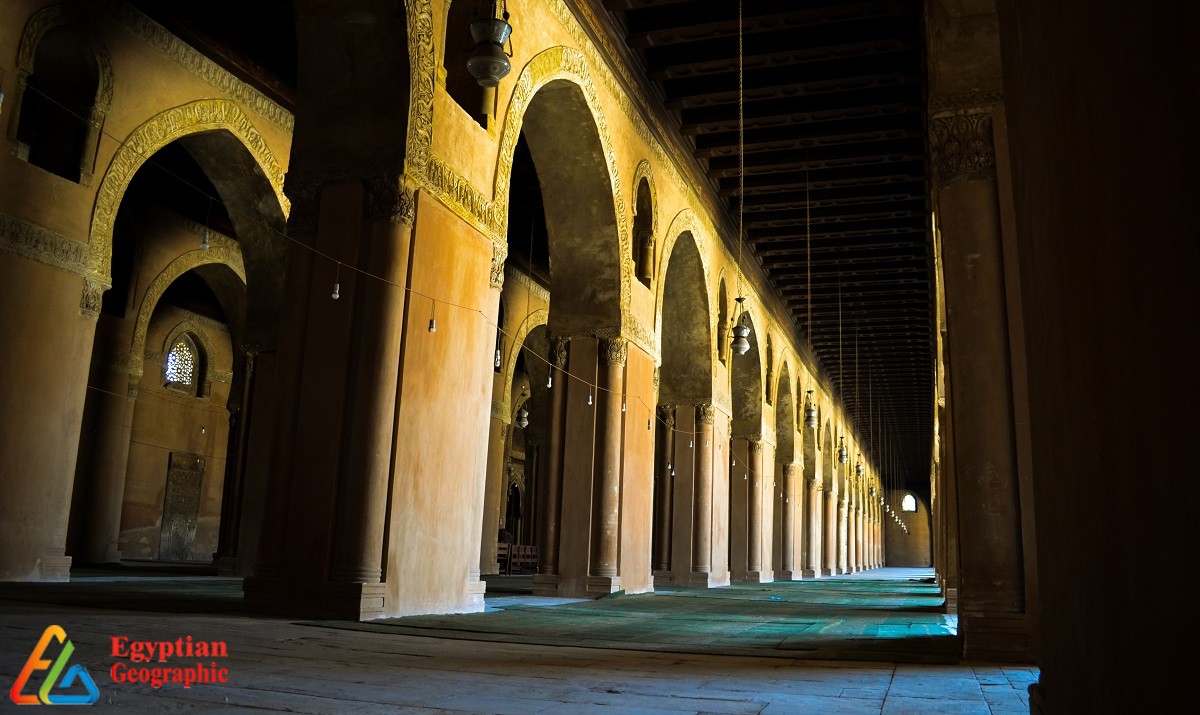
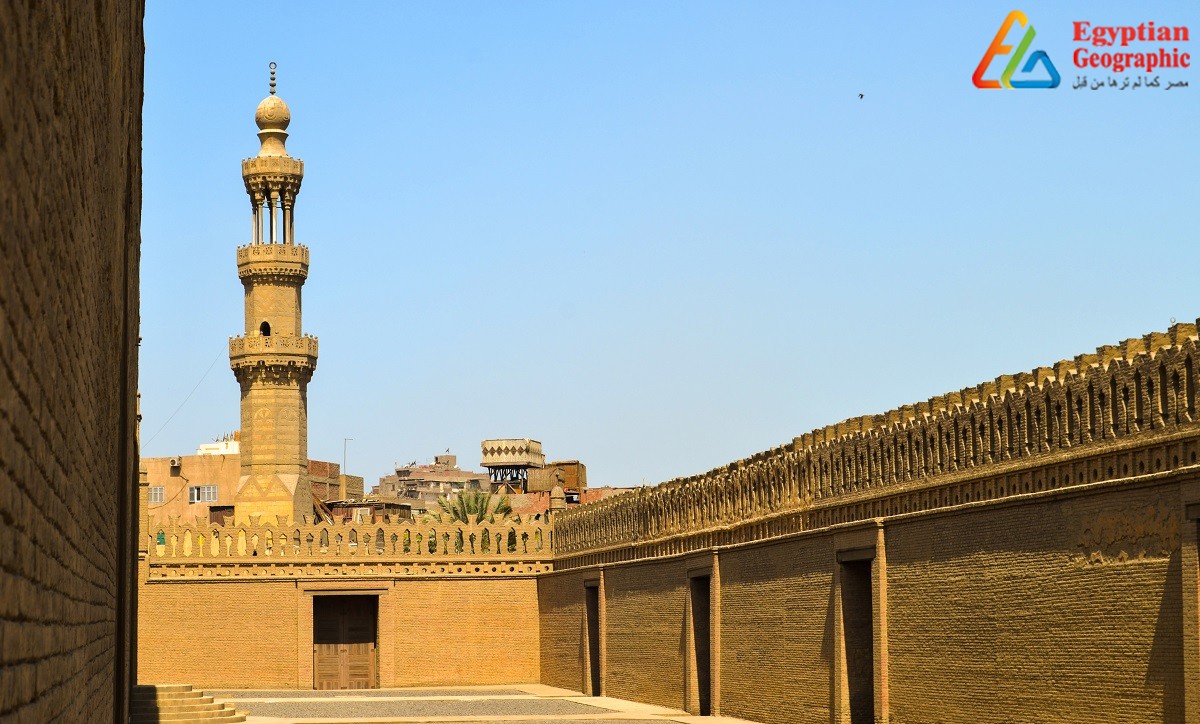
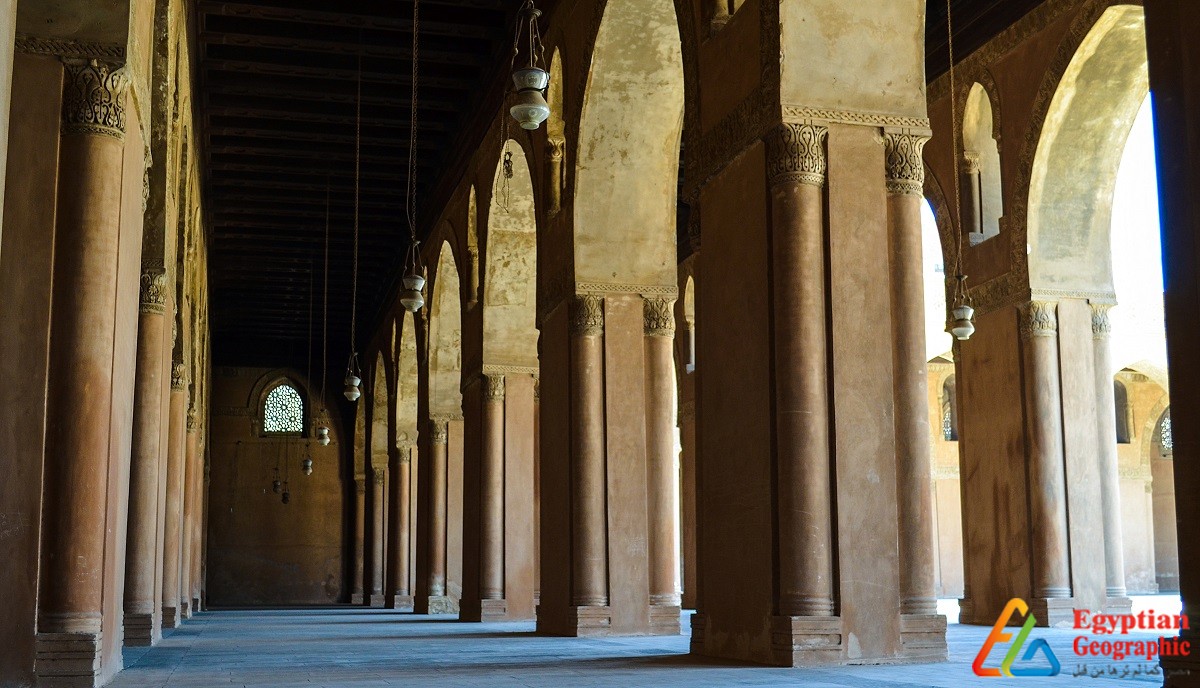
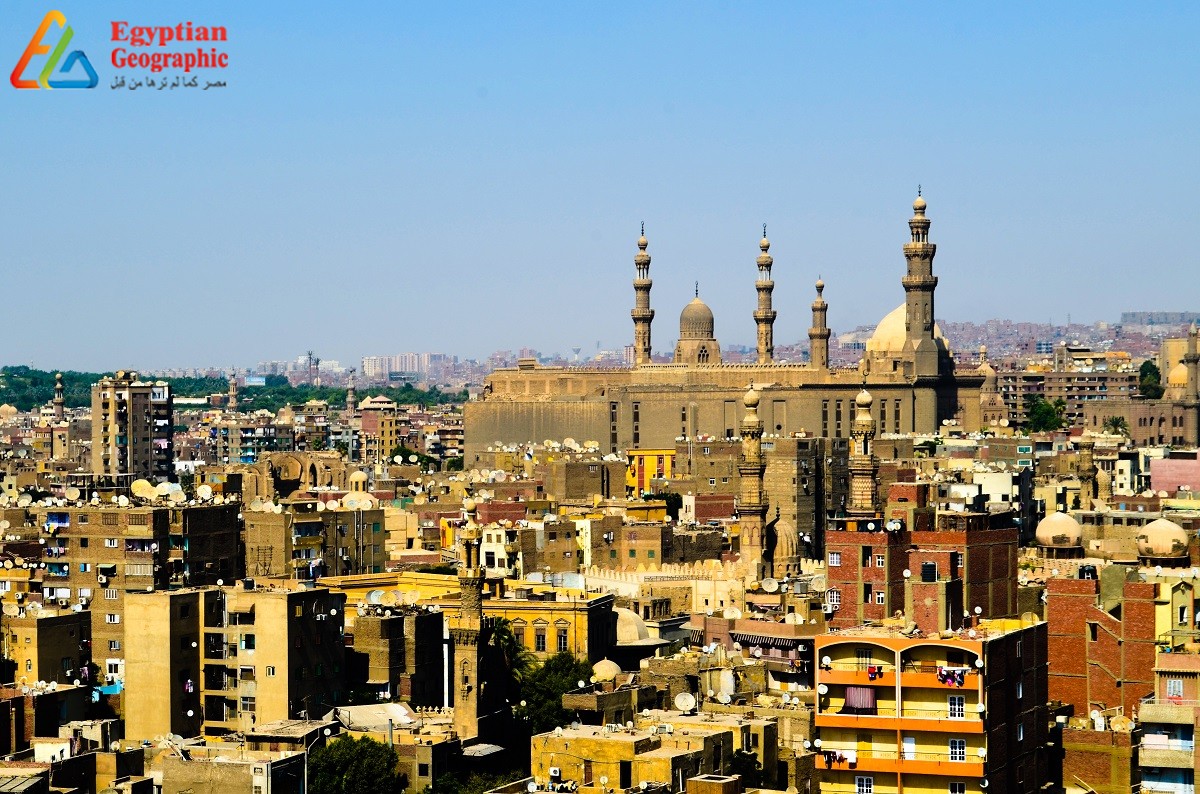

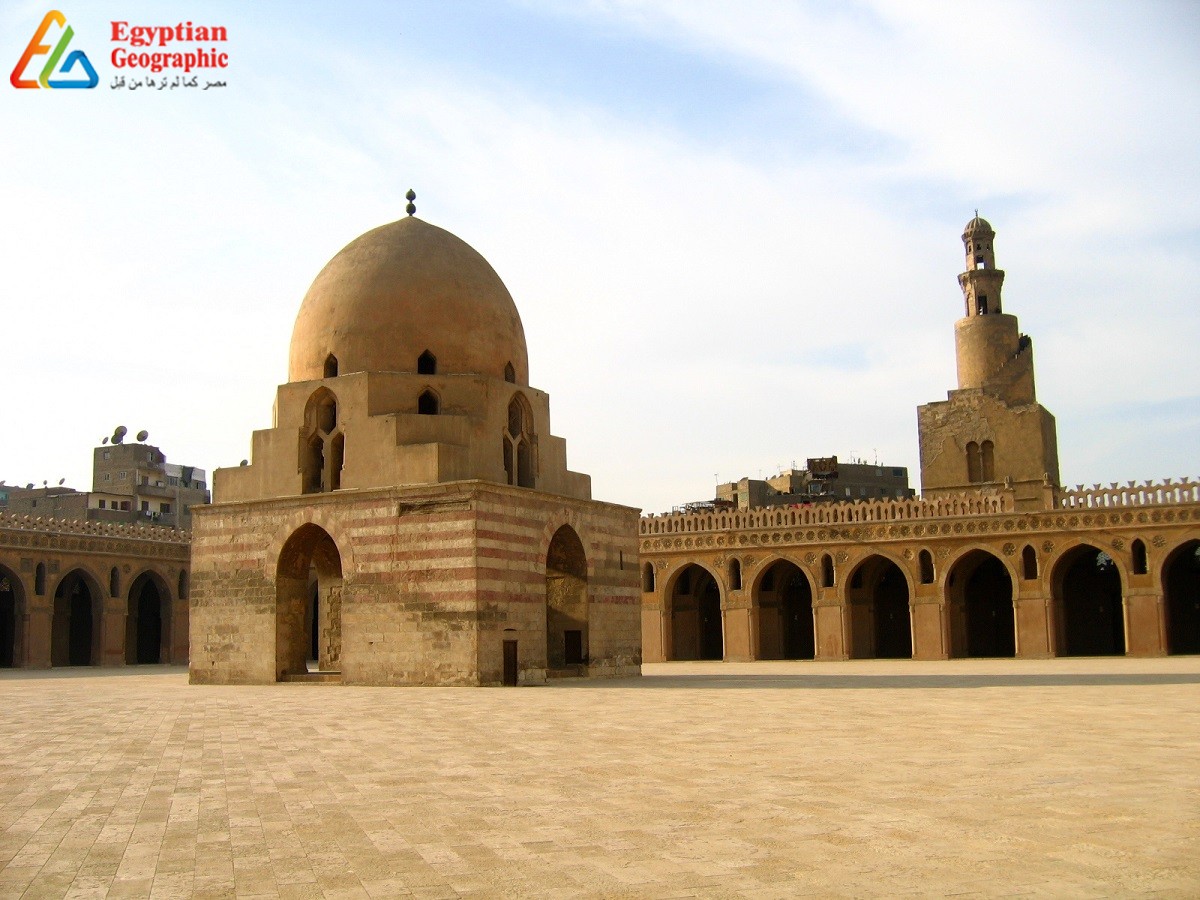

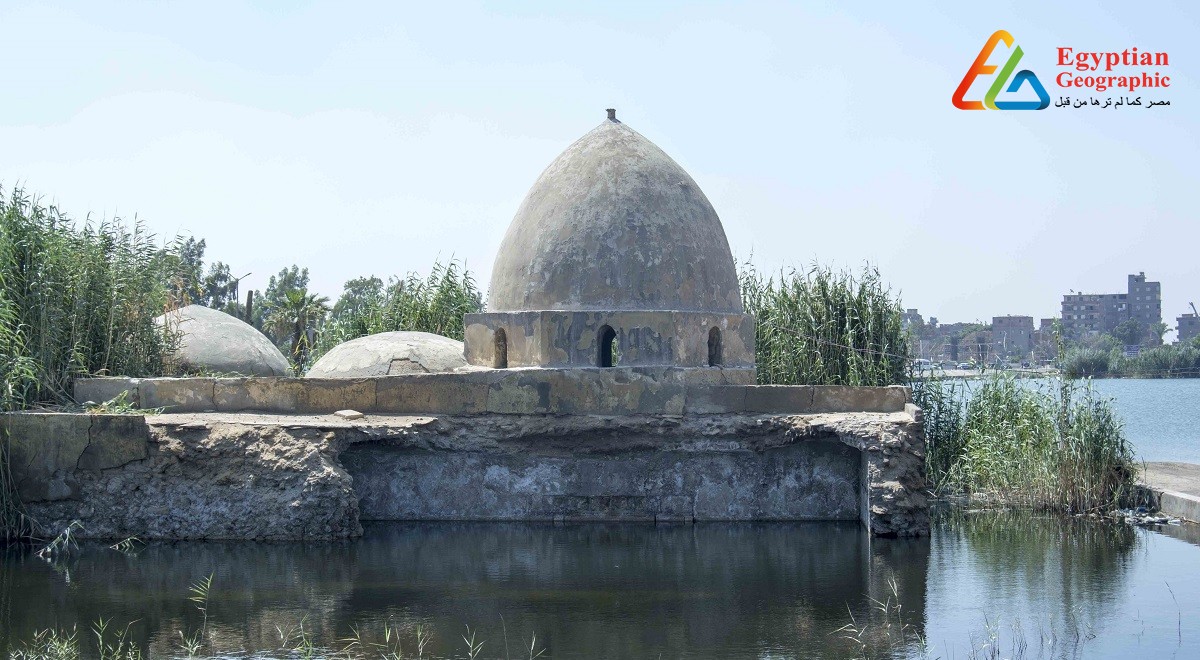

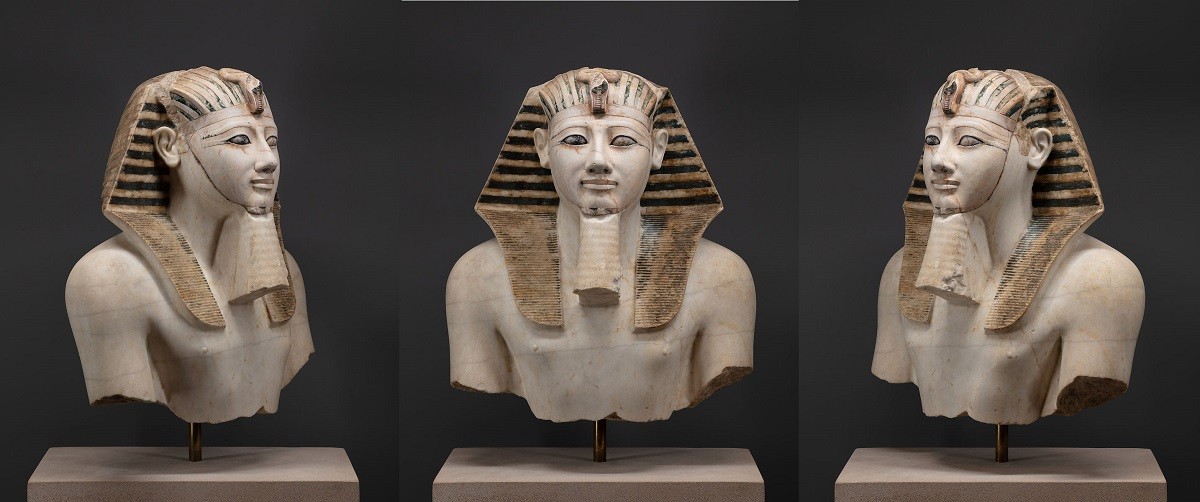



























Egyptian Site & magazine